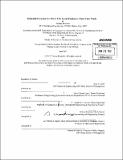| dc.contributor.advisor | Jeremie Gallien, Stephen C. Graves and David Simchi-Levi. | en_US |
| dc.contributor.author | Bonnefoi, Tatiana (Bonnefoi Monroy) | en_US |
| dc.contributor.other | Leaders for Global Operations Program. | en_US |
| dc.date.accessioned | 2012-10-26T18:10:10Z | |
| dc.date.available | 2012-10-26T18:10:10Z | |
| dc.date.copyright | 2012 | en_US |
| dc.date.issued | 2010 | en_US |
| dc.identifier.uri | http://hdl.handle.net/1721.1/74454 | |
| dc.description | Thesis (S.M.)--Massachusetts Institute of Technology, Dept. of Mechanical Engineering; and, (M.B.A.)--Massachusetts Institute of Technology, Sloan School of Management; in conjunction with the Leaders for Global Operations Program at MIT, 2010. | en_US |
| dc.description | Cataloged from PDF version of thesis. | en_US |
| dc.description | Includes bibliographical references (p. 79-80). | en_US |
| dc.description.abstract | The problem of optimally purchasing new products is common to many companies and industries. This thesis describes how this challenge was addressed at Zara, a leading retailer in the "fast fashion" industry. This thesis discusses the development of a methodology to optimize the purchasing process for seasonal, short life-cycle articles. The methodology includes a process to develop a point forecast of demand of new articles, the top-down forecast at the color and size level and an optimization module to produce recommendations to define the optimal quantity to purchase and the optimal origin to source from. This thesis is the first phase of a two phases purchasing optimization process. The focus of this thesis is: a) the outline of an enhanced purchasing methodology b) the development of the most important input in the system: a point forecast of demand at the article, color, and size level, and c) the development of an IT prototype to automatically manage the purchasing methodology. The second phase of the purchasing optimization process focuses on the optimization module. The optimization module is beyond the reach of this thesis. | en_US |
| dc.description.statementofresponsibility | by Tatiana Bonnefoi. | en_US |
| dc.format.extent | 82 p. | en_US |
| dc.language.iso | eng | en_US |
| dc.publisher | Massachusetts Institute of Technology | en_US |
| dc.rights | M.I.T. theses are protected by
copyright. They may be viewed from this source for any purpose, but
reproduction or distribution in any format is prohibited without written
permission. See provided URL for inquiries about permission. | en_US |
| dc.rights.uri | http://dspace.mit.edu/handle/1721.1/7582 | en_US |
| dc.subject | Mechanical Engineering. | en_US |
| dc.subject | Sloan School of Management. | en_US |
| dc.subject | Leaders for Global Operations Program. | en_US |
| dc.title | Demand forecast for short life cycle products : Zara case study | en_US |
| dc.type | Thesis | en_US |
| dc.description.degree | M.B.A. | en_US |
| dc.description.degree | S.M. | en_US |
| dc.contributor.department | Leaders for Global Operations Program at MIT | en_US |
| dc.contributor.department | Massachusetts Institute of Technology. Department of Mechanical Engineering | |
| dc.contributor.department | Sloan School of Management | |
| dc.identifier.oclc | 813318635 | en_US |
